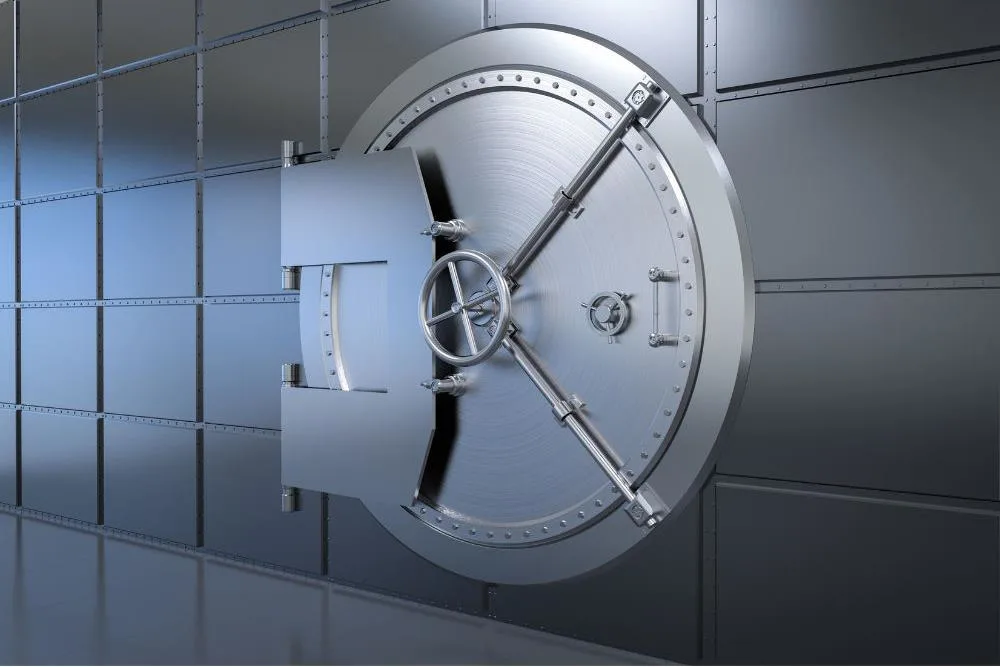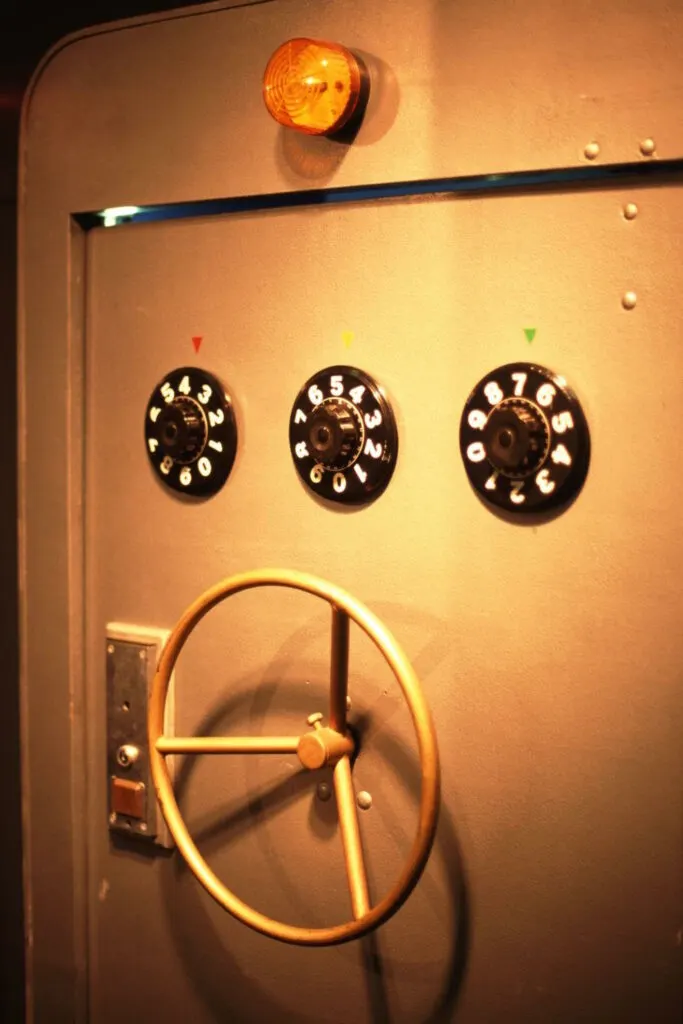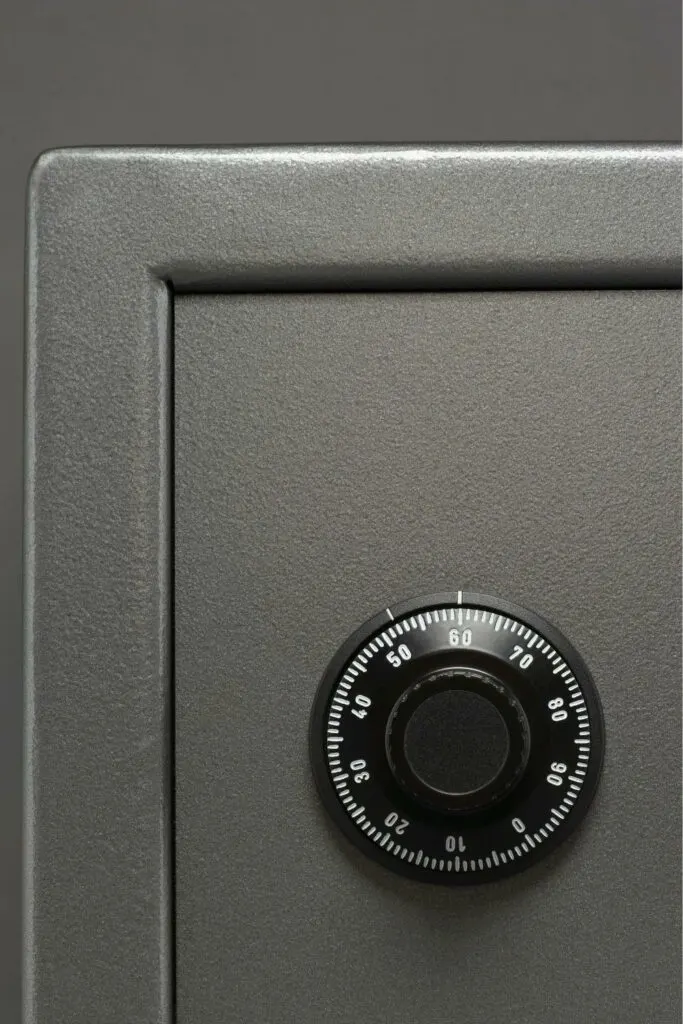Safecracking is an intriguing and specialized profession that calls for a unique skill set, combining technical expertise with precision and patience.

For those looking to pursue a career in this fascinating field, it’s essential to understand the steps involved in becoming a certified safecracker, and the opportunities that lie ahead once you’ve acquired the necessary qualifications.
A safecracker’s primary role is to open secured containers such as safes and vaults without causing damage to the content inside. They often work in high-pressure situations, helping individuals, businesses, or law enforcement agencies gain access to valuable or sensitive possessions. In order to excel in this line of work, aspiring safecrackers should be prepared to invest in proper training and certification, which includes mastering various tools and techniques, and developing a deep understanding of complex locking mechanisms.
Becoming a Safecracker
Certified Master Safecracker
Becoming a Certified Master Safecracker (CMS) requires dedication and skill development. The National Safeman’s Organization (NSO) offers this certification, which is the highest level in the field. Candidates for the CMS must demonstrate knowledge of various tools and techniques, dial-to-lock identification, round doors, square doors, and fire safes1. Some key aspects of this process are:
- Education: About 44% of certified master safecrackers have a bachelor’s degree2.
- Experience: Gaining experience as a safecracker is vital for developing mastery in the field.
- Certification: Passing the CMS test is required to become a certified master safecracker.
Certified Journeyman Safecracker
Before achieving the CMS level, aspiring safecrackers often start as a Certified Journeyman Safecracker. This title indicates a level of expertise that’s a step below the master level, but still a critical part of a safecracker’s career development. To become a Certified Journeyman Safecracker, individuals typically:
- Complete training: Prospective safecrackers will attend a series of courses and workshops to learn the skill.
- Gain experience: Working with experienced safecrackers helps new technicians gather essential knowledge and insights.
- Pass exams: Candidates must pass the Certified Journeyman Safecracker exam, offered by the NSO, demonstrating their expertise in the field.
In conclusion, the journey to become a safecracker begins with selecting the right educational track and gaining hands-on experience. By diligently working through the training and certifications offered by organizations like the NSO, individuals can progress from Certified Journeyman Safecracker to the esteemed Certified Master Safecracker level.

Required Skills and Education
Locksmithing Skills
To become a successful safecracker, it’s essential to have a strong foundation in locksmithing skills. This includes knowledge of different locks, tools, and techniques used in the field. Comprehensive training in safe manipulation, dial-to-lock identification, and various door types (round and square) is crucial. Moreover, acquiring a certification, like becoming a Certified Master Safecracker (CMS), can significantly improve your credibility and career prospects. Information about this certification can be found on the National Safeman’s Organization website.
Bachelor’s Degree
While not always a requirement, having a bachelor’s degree can be an added advantage in pursuing a career as a safecracker. According to Zippia, 44% of Certified Master Safecrackers have a bachelor’s degree, with 21% majoring in business. This educational background can help you better understand the administrative and operational aspects of running a locksmithing business.
Online Courses
Aspiring safecrackers can also benefit from online courses that cover essential skills and techniques. One such resource is the book Safecracking 101: A beginner’s guide to safe manipulation and drilling, which serves as a self-learning guide for those looking to start a career in locksmithing and security.
In addition to books, you can explore professional organizations like the Society of Professional Locksmiths, which offers resources like the Safecracking 101 course manual. This manual focuses on teaching safe manipulation principles using the Sentry Safe model as an example, simplifying the learning process for beginners.
By honing your locksmithing skills, obtaining a relevant bachelor’s degree, and utilizing online courses, you can take significant steps towards a successful career as a safecracker. Remember to focus on constant skill development and stay updated on the latest advancements and certifications in the industry.

Safety and Reputation
Becoming a safecracker requires dedication to safety and building a reputable career. Two organizations play a significant role in ensuring safety and professionalism in this field – the National Security Organization (NSO) and the Safe and Vault Technicians Association (SAVTA).
National Safeman’s Organization
The National Safeman’s Organization (NSO) is known for its certification programs for safecrackers. They provide three levels of certification, with the highest level being the Certified Master Safecracker (CMS). The NSO aims to promote safety, knowledge, and skill in the area of safecracking. A candidate intending to become a Certified Master Safecracker must demonstrate a deep understanding of tools, techniques, lock identification, and working with various types of doors and safes.
Safe and Vault Technicians Association
Another notable organization is the Safe and Vault Technicians Association (SAVTA). Their focus lies in fostering ethical conduct, technical proficiency, and professional standards in the safe and vault industry. They offer resources, education, and certifications for aspiring safe technicians, ensuring that its members maintain high security and safety standards.
One helpful resource provided by SAVTA is the Safecracking 101 course, which simplifies safe manipulation principles using the Sentry Safe as a model. This course is a recommended starting point for anyone looking to join the field of safecracking.
Key Takeaways:
- Both NSO and SAVTA promote safety and professionalism in the safecracking industry.
- The NSO is known for its certification programs, with the Certified Master Safecracker being the highest level.
- SAVTA focuses on ethical conduct, technical proficiency, and professional standards, offering training resources like Safecracking 101 for beginners.
By joining the NSO or SAVTA, aspiring safecrackers can build a strong reputation while ensuring they prioritize safety and high-security measures in their work. Additionally, events like penetration parties offer opportunities for safe technicians to network with professionals, share knowledge, and learn from one another in a controlled environment.
Famous Safecrackers
Dave McOmie
Dave McOmie is a renowned professional safecracker who has made a name for himself in the world of locksmithing through his expertise in opening various kinds of bank vaults. McOmie’s work not only involves helping clients gain access to their locked safes but also has extended to assisting the press in exposing the vulnerabilities of certain safes.
His skill set has placed him in high demand, and he has often been called upon to open some of the most secure safes and bank vaults in the industry. While many safecrackers rely on the use of force to open a locked safe, McOmie has become known for his finesse and nuanced approach.
Over the years, McOmie has had numerous successes, including being able to open:
- High-Security Bank Vaults: These vaults are designed with a myriad of protections and redundancies to prevent unauthorized access. McOmie’s exceptional knowledge of the mechanisms involved has allowed him to regularly bypass these safeguards.
- Antique Safes: These safes often feature unique and bespoke locking mechanisms that can pose a challenge even to experienced safecrackers. McOmie’s understanding of different locking systems has helped him navigate these obstacles successfully.
- Abandoned Vaults: Occasionally, clients may require access to long-forgotten vaults, wherein the original combinations or keys may have been lost. In these cases, McOmie has managed to find solutions to seemingly impossible situations.
Though Dave McOmie’s skills as a safecracker have attracted attention, he maintains a strict code of ethics. He works closely with law enforcement and other authorities when necessary to ensure that his services are used responsibly.
With his adeptness in cracking various types of bank vaults and safes, Dave McOmie has cemented his legacy as one of the most famous and respected safecrackers in the community.
Career Opportunities
Working with Vaults and Safes
A career as a safecracker requires knowledge in locksmithing. One of the core responsibilities of this profession is working with vaults and safes, where you will be entrusted to open safes that have been locked due to lost combinations, malfunctioning locks, or other reasons. The key to succeeding in this role is to develop expertise in various safe and vault mechanisms, as well as the tools and techniques used to open them without causing damage.
There are approximately 42,525 job openings for certified master safecrackers in the US job market currently, with an annual salary ranging from $25,000 to $38,000 per year. Some safecrackers charge on a per-job basis, earning between $500-$1,000 for each job they complete. To increase your earning potential and reputation in the field, it can be helpful to obtain relevant certifications and further your locksmithing education.
Safecracker vs. Burglar
While both safecrackers and burglars may have the ability to open safes, there is a clear distinction between the two professions. Safecrackers operate within the confines of the law, providing professional services to clients who require help with their locked safes and vaults. On the other hand, burglars engage in criminal activity to break into safes and steal valuables.
As a safecracker, you have the opportunity to build a legitimate and rewarding career, using your skills and expertise to assist clients in accessing their valuables without resorting to illegal activities. This distinction is essential to maintain a strong professional reputation and uphold the ethical standards of the safecracking industry.
By pursuing a career as a safecracker and working with vaults and safes, you can reap the benefits of a financially rewarding and ethically grounded profession, setting yourself apart from the criminal activities of burglars. As the demand for these services continues to rise, you’ll find numerous opportunities to grow and excel in this exciting field.
